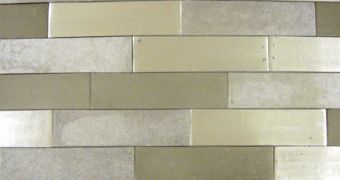IT Blogwatch is citing one of its own people as saying he has solved the riddle behind Apple's “Brick”. According to the blog posting daily digests of IT sources, there are clues that Apple products' cases are crafted by taking a “brick” of aluminum and carving it using a laser and water-jet system, which is where all the “Brick” rumors have spawned from.
“The MacBook Brick is a block of high-quality, aircraft grade aluminum,” Computerworld's Weintraub says. “It is the beginning of the new Apple manufacturing process to make MacBooks. It is totally revolutionary, a game changer ... [Apple] has spent the last few years building an entirely new manufacturing process that uses lasers and jets of water to carve the MacBooks out of a brick of aluminum.”
The author, who, over time, has been the source of several MacBook rumors, adds that “in 1990, Fortune did a piece on Jobs' new production facilities in Fremont California for NeXT. It was, at the time, 'The ultimate computer factory' ... But alas, the NeXT hardware didn't gain traction so the facility never really got to push out equipment as Jobs would have hoped.”
Citing John Martellaro of the Mac Observer, who said Apple should build its own plant for manufacturing components, Weintraub found that a couple of Apple factories in the right place “would be a worthy endeavor for Apple and its cash.” Why? “It would achieve the grandest goals for Apple's technical future, make a contribution to the planet and its people's well being and help insure Apple's financial and political security,” the author believes.
The response to these claims has been divided. Some believe that the energy alone for this manufacturing process would push the MacBook's price even higher. Such lasers, according to skeptics, would be powered by coal-fired power plants. Besides adding additional manufacturing costs, this would also conflict with Apple's attempts of reducing its carbon footprint.
Do you think that Apple's “Brick” is a term the company uses to refer (internally) to a manufacturing process, rather than a new product?

 14 DAY TRIAL //
14 DAY TRIAL //